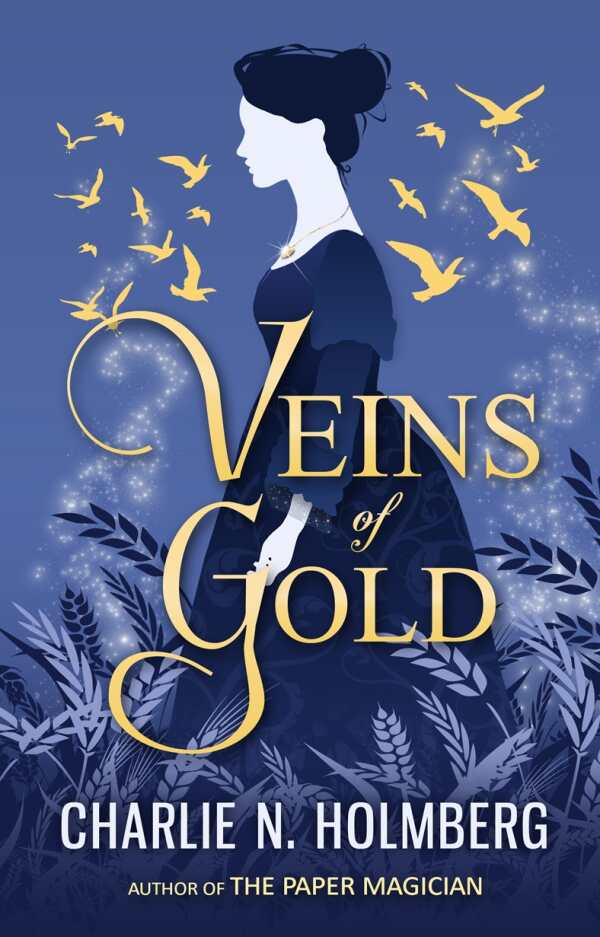Veins of Gold
Fantasy novelist Charlie N. Holmberg fuses melodrama, romance, and magic in Veins of Gold, a fanciful tale set in nineteenth-century Utah. Anime flourishes and unpredictable marvels pave a young woman’s path toward belief.
Gentry Abrams is a damsel in distress. At the novel’s start, her widowed father abruptly leaves their homestead to join the California gold rush. Gentry is forced to fend for herself, her brother, Rooster, and her sister, Pearl. With few pennies to spare, Gentry embarks on a journey that leads toward Winn Maheux: a stranger whose ties to the earth teach her to see the magic that lives in the wilderness.
In a town where geysers, earthquakes, and other disturbances are unleashed as a result of gold mining upsetting the earth’s balance, the Abrams family struggles to survive. Despite their circumstances, the plot seldom darkens. Numerous elements bring whimsy to an unforgiving landscape. These include a floating house made of seagulls, creatures most people can’t see, and a swarm of sentient locusts.
Japanese film director Hayao Miyazaki’s influence is clear from the outset, through environmental themes as well as enchanting details. The work never slips into easy fan tribute; it skillfully infuses its own flair. Here, the American West is a pioneering outpost, a site for derring-do, and a mirror for mankind.
Winn’s magic remains broadly defined, with a handful of rules based on respect. It’s also rooted in the Hagree, a fictional Native American tribe. With less of the storied aura and elaboration that surrounds other magic systems—such as alchemy—magic becomes a means rather than an end. The fantasy keeps its focus on human relationships; the Abrams household especially stands out, as the three siblings keep faith in one another.
The story is as eye-opening as it is satisfying as Gentry realizes that Winn is more than a mage, and as she learns to rely on her family instead of shouldering every burden herself.
Reviewed by
Karen Rigby
Disclosure: This article is not an endorsement, but a review. The publisher of this book provided free copies of the book to have their book reviewed by a professional reviewer. No fee was paid by the publisher for this review. Foreword Reviews only recommends books that we love. Foreword Magazine, Inc. is disclosing this in accordance with the Federal Trade Commission’s 16 CFR, Part 255.

